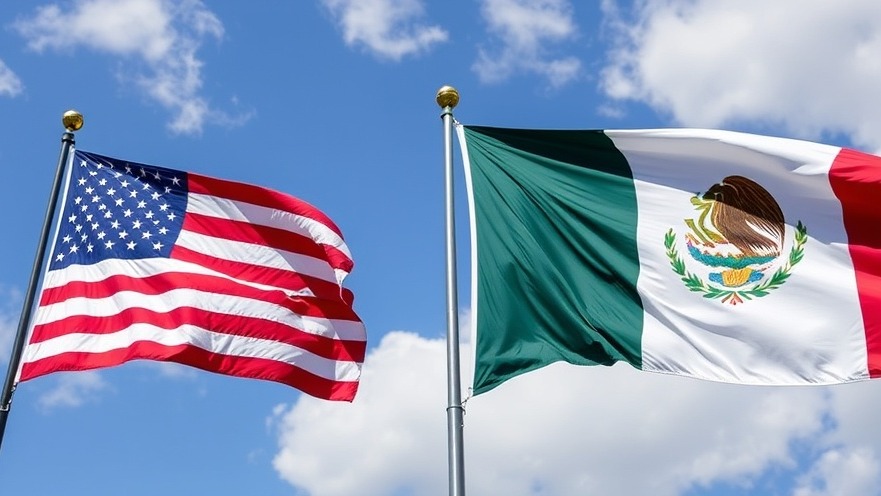
Impending Tariffs: A Looming Challenge for Texas
As the clock ticks down to August 1, 2025, Texas businesses brace themselves for uncertainty. With President Trump's recent announcement of a potential hike in tariffs on Mexican imports to 30%, the significant ties between Texas and its neighbor to the south are under threat. This decision poses risks not only to state economies but also to the livelihoods of thousands across the state. The stakes couldn’t be higher for Texas, which boasts an annual trade worth over $281 billion with Mexico, making it the state’s largest trading partner.
The Fabric of Texas-Mexico Trade Relations
To fully appreciate the implications of these tariffs, it is crucial to understand the deep connections forged between Texas and Mexico over decades. Much of Texas agriculture thrives on a bi-national model. Farmers and importers in Texas rely on Mexican produce to meet the state’s year-round demand. The Texas International Produce Association highlights that produce worth an estimated $13 billion is at risk, representing nearly 400 Texas companies dependent on this critical trade relationship.
The Economic Impact of Tariff Increases
The proposed increase from 25% to 30% could trigger a ripple effect throughout Texas’ economy. A sudden spike in tariff rates could effectively double costs for many imported goods, which might then cascade down in the form of higher prices for consumers. Craig Slate, CEO of a Mexican produce importing company based in Texas, expressed his concerns—"It’s vastly different from where we are at today." Analysts warn this economic shift could severely impact not just importers but also consumers at local grocery stores.
Historical Context: Lessons from Previous Tariff Changes
This is not the first time Texas businesses have faced the threat of sudden tariff increases. Earlier attempts to impose tariffs led to market fluctuations that alarmed many stakeholders within the agricultural sector. The brief period of uncertainty witnessed in March caused markets to tumble briefly, foreshadowing how fragile these trade relations can be. The swift rebound, however, should not lead to complacency as history indicates the volatility of trade policies—especially in an interconnected global economy.
What This Means for Local Economies
For those reliant on cross-border trade, the implications of increased tariffs are dire. As consumers see food prices rise, local economies may feel the strain of decreased consumer spending. Trade associations are quick to emphasize that all eyes will be on the ongoing negotiations and the potential for a trade deal that might ease these restrictions before they take full effect.
Future Predictions: What Lies Ahead?
As the August deadline approaches, markets will be closely monitoring whether the proposed tariffs take effect. Economists suggest potential avenues for negotiations that could mitigate some of the impending fallout. Many suggest that lifting tariffs in exchange for stricter enforcement of border security could be a pragmatic solution. However, the question remains: will both countries find common ground as tensions rise?
Emotional and Human Interest Angles
Behind the statistics and policies are real people whose livelihoods are on the line. The experience of Texas families who depend on the stability of these trade relations cannot be overstated. Potential job losses in the agricultural sector represent more than just numbers—they symbolize the disruption of families and communities rooted in these industries.
Conclusion: The Call to Action
As the situation develops, it becomes increasingly vital for stakeholders in Texas to engage in dialogue and advocate for favorable trade agreements. Understanding the broader implications of such tariffs can empower businesses and individuals alike to act in their best interest. Now more than ever, the Texas community must come together to navigate these turbulent times in anticipation of what lies ahead.
 Add Element
Add Element  Add Row
Add Row 



Write A Comment